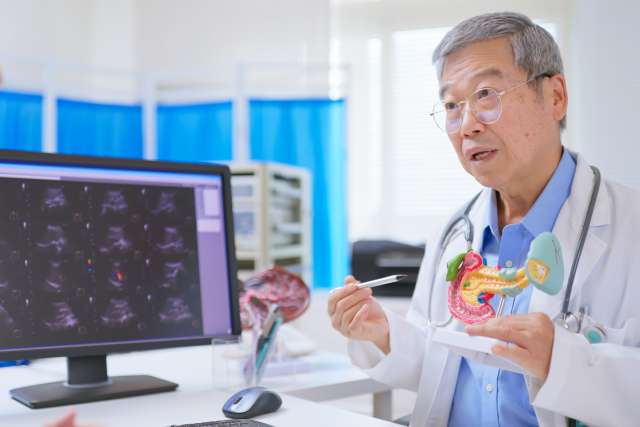| Dr. Daniel Geschwind |
Published in the June 21 online edition of the American Journal of Human Genetics, the findings could help scientists zero in on genes that offer future therapeutic targets for the disorder.
"Technological advances now allow us to rapidly sequence the genome and uncover dozens of rare mutations," explained principal investigator Dr. Daniel Geschwind, UCLA's Gordon and Virginia MacDonald Distinguished Professor of Human Genetics and a professor of neurology at the David Geffen School of Medicine at UCLA. "But just because a particular genetic mutation is rare doesn't mean it's actually causing disease. We used a new approach to tease out potential precursors of autism from the occasional genetic glitch."
Geschwind and his colleagues studied DNA contained in blood samples from 244 families with one healthy child and one child on the autism spectrum. The team used a hybrid method that blended tests that read the order of DNA bases with those that analyze gene expression, the process by which genes make cellular proteins.
"Monitoring gene expression provides us with another line of data to inform our understanding of how autism develops," said Geschwind, who also directs the Center for Autism Research and Treatment at the Semel Institute for Neuroscience and Behavior at UCLA. "Integrating this method with the sequencing of DNA bases expands our ability to find mutations leading to the disease."
Gene expression offers a molecular signpost pointing scientists in the right direction by narrowing the field and highlighting specific areas of the genome. For example, if a gene is expressed at substantially higher or lower levels in a patient, researchers will review the patient's DNA to check if that gene has changed.
"We found that we can use gene expression to help understand whether a rare mutation is causing disease or playing a role in disease development," said Geschwind. "A true mutation will alter a gene's sequence, modifying the protein or RNA it produces — or preventing the gene from producing them entirely.
"A gene mutation accompanied by a change in expression clues us to a hot spot on the genome and directs us where to look next," he added. "Not all mutations will influence gene expression, but this approach improves our ability to pinpoint those that do."
The researchers used the combined method to prioritize gene targets that merit closer investigation. The approach could potentially help explain why one person develops autism and their sibling does not.
Their search turned up new regions in the genome where genetic variations showed strong links to autism and altered expression patterns. Genes in these regions were more likely to be mutated in the autistic children than in their unaffected siblings.
"When we looked at genes associated with nervous-system function we found significantly more genes were expressed at higher or lower levels in the children diagnosed with autism than we did in their siblings unaffected by the disorder," said Geschwind.
Finally, the research team discovered that the DNA contained in peripheral blood — the blood that flows and circulates through the body — can help shed light on diseases of the central nervous system. Brain cells and genes related to synaptic function are expressed in the blood, offering a window into gene expression.
"Brain tissue from people with autism is not readily available for study, and some people are reluctant to use non-neural tissue in psychiatric disease," Geschwind explained. "But our study demonstrates that even peripheral blood can expand our knowledge of neurological disease."
The team's next step will be to replicate their findings in a larger population.
Autism is a complex brain disorder that strikes in early childhood. The condition disrupts a child's ability to communicate and develop social relationships and is often accompanied by acute behavioral challenges. Autism spectrum disorders are diagnosed in one in 110 children in the United States, affecting four times as many boys as girls. Diagnoses have expanded tenfold in the last decade.
The research was supported by grants from the Simons Foundation, the National Institute of Mental Health (5R01 MH081754-04), the Wellcome Trust, and Autism Speaks. Geschwind's co-authors included first author Rui Luo, Irina Voineagu, Lambertus Klei, Chaochao Cai, Jing Ou, Jennifer Lowe and Matthew State of UCLA; Stephan Sanders of Yale University; Ni Huang and Matthew Hurles of the Wellcome Trust Sanger Institute; and Su Chu and Bernie Devlin of Carnegie Mellon University.
The UCLA Center for Autism Research and Treatment provides diagnosis, family counseling, clinical trials and treatment for patients with autism. UCLA is one of eight centers in the National Institutes of Health–funded Studies to Advance Autism Research and Treatment network and one of 10 original Collaborative Programs for Excellence in Autism.
For more news, visit the UCLA Newsroom and follow us on Twitter.



